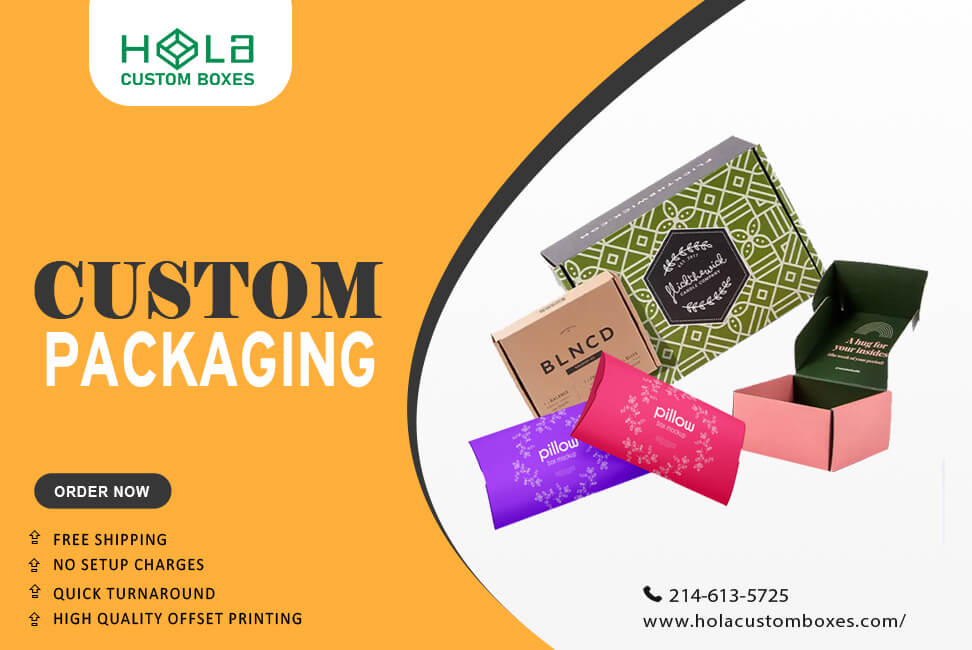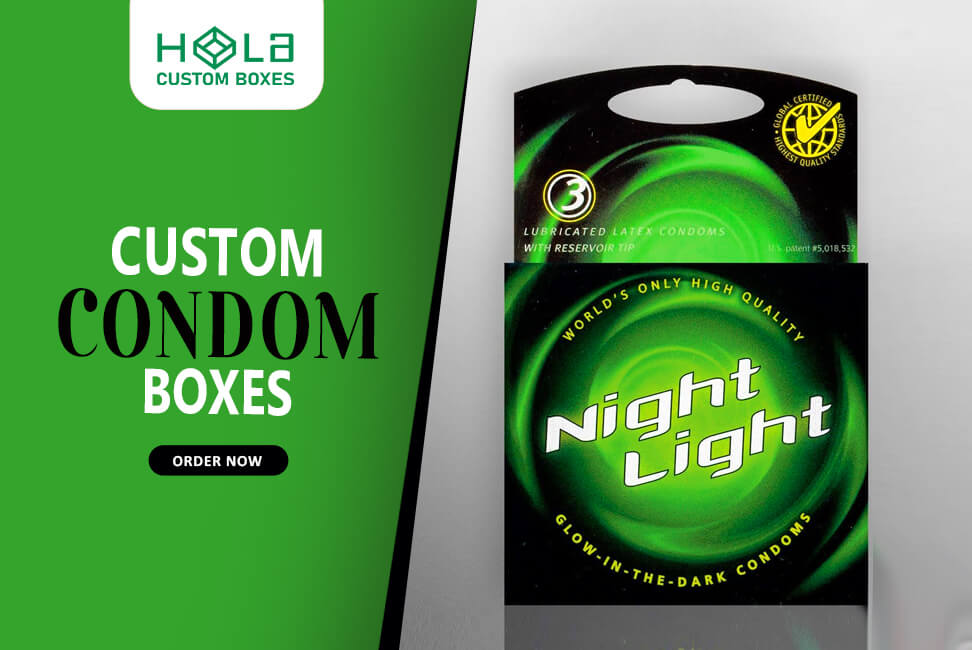The Future Of Ecommerce Packaging: Innovations, Sustainability, And Personalization
2025-12-10 10:26:51
The future of e-commerce packaging is a topic of great interest and importance in the rapidly growing e-commerce industry. With the industry projected to reach $61.55 billion by 2025, it is crucial for businesses to stay ahead of the curve and adapt to the changing landscape.
Consumers are becoming increasingly conscious of the eco-friendliness, interactivity, personalization, and innovation of package design when choosing where to shop. Packaging is no longer just a means of delivering the product; it plays a pivotal role in the unboxing experience, brand reputation, and product safety. In fact, packaging design influences 72% of American consumers, and luxury packaging can lead to repeat purchases.
Furthermore, the rise of unboxing videos has significantly influenced consumers' purchasing decisions. As such, companies must also consider how packaging connects with their values and resonates with consumers.
In this article, we will explore the future of ecommerce packaging, including market projections, consumer considerations, the importance of the unboxing experience, the influence of packaging design, luxury packaging, the role of unboxing videos, packaging and social media, and the connection between packaging and company values.
By understanding these trends and implementing new technologies, e-commerce businesses can thrive in this ever-evolving industry.
Key Takeaways
- The e-commerce packaging industry is projected to reach $61.55 billion by 2025, underscoring its expanding and evolving nature.
- Packaging plays a crucial role in the e-commerce industry, as consumers consider factors such as eco-friendliness, interactivity, personalization, and innovation when choosing where to shop.
- Unboxing experience and unique packaging have a significant impact on brand reputation, perceived value, and social media sharing, influencing consumer purchasing decisions and repeat purchases.
- There is a growing demand for sustainable, eco-friendly packaging options, driven by consumers seeking alternatives to plastic and a focus on sustainable sourcing and manufacturing.
Sustainability Takes Center Stage in E-Commerce Packaging
As consumer demand for eco-friendly solutions grows, sustainability is becoming a defining factor in the future of e-commerce packaging. Businesses are shifting toward biodegradable, compostable, and recyclable materials as alternatives to traditional plastics. In addition to material choices, sustainable sourcing and ethical manufacturing practices are gaining traction. These efforts not only reduce environmental impact but also strengthen brand trust among increasingly eco-conscious shoppers.
Embracing Innovation and Personalization Through Technology
.jpg)
The integration of advanced technologies is revolutionizing e-commerce packaging. Smart packaging, IoT-enabled tracking, and immersive experiences through augmented and virtual reality (AR/VR) are enhancing both logistics and customer engagement. IoT facilitates real-time inventory and supply chain visibility, while AR and VR bring digital storytelling and interactive brand experiences directly to consumers. When combined with personalized packaging strategies, these innovations can significantly boost customer satisfaction, brand loyalty, and overall sales performance.
Market Projections in the E-Commerce Packaging Industry
What are the projected market values for the e-commerce packaging industry in the coming years?
The e-commerce packaging industry is expected to grow significantly in the coming years, driven by the rapid expansion of the global e-commerce market. According to market projections, the e-commerce packaging industry is expected to reach $61.55 billion by 2025.
This growth can be attributed to the increasing demand for online shopping, especially during the global pandemic lockdown. However, alongside this growth, sustainability challenges need to be addressed. The rise in packaging waste and the environmental impact of transportation are concerns that require sustainable and eco-friendly solutions.
Meeting these challenges and embracing sustainable sourcing and manufacturing practices will not only strengthen brand image but also lead to reduced costs and increased profits in the long run.
Consumer Considerations In the E-Commerce Packaging Industry
Consumer preferences play a crucial role in shaping the e-commerce packaging industry. As sustainability becomes a growing concern, consumers are increasingly demanding eco-friendly packaging options. They prioritize package eco-friendliness, interactiveness, personalization, and innovation when choosing where to shop.
A study found that 72% of American consumers are influenced by packaging design, and 40% will post a picture of unique or branded packaging on social media. Additionally, 50% of consumers would recommend a product if it comes in gift-like or branded packaging.
To meet these preferences, e-commerce businesses are exploring sustainable sourcing and manufacturing, as well as using biodegradable and compostable materials as alternatives to plastic. By addressing consumer demands for eco-friendly options, businesses can strengthen their brand image, reduce costs, and increase profits.
Personalization and customization also play a significant role, with 80% of consumers more likely to purchase from brands offering personalized experiences.
Importance of Unboxing Experience
The unboxing experience is significant for e-commerce businesses, as it directly affects brand reputation and product safety.
Improving product safety during unboxing is crucial to ensure the product arrives intact and undamaged. This can be achieved by using appropriate packaging materials such as bubble wrap, air pillows, and tissue paper to provide cushioning and protection. Additionally, using secure packaging techniques, such as sealing tape and proper stacking, can prevent items from shifting or becoming damaged during transit.
Enhancing brand reputation is another key aspect of the unboxing experience. By incorporating unique, branded packaging designs, businesses can create a memorable, visually appealing experience for customers. This can increase the product's perceived value and encourage customers to share their unboxing experiences on social media, further boosting brand visibility and customer engagement.
Influence of Packaging Design

Packaging design plays a significant role in influencing consumer purchasing decisions and can impact brand perception and engagement.
Innovative packaging designs are emerging as key trends in the e-commerce industry. Companies are focusing on creating visually appealing and functional packaging that enhances the unboxing experience. Unique and creative packaging designs capture consumers' attention and increase the perceived value of the product.
Studies show that 72% of American consumers are influenced by packaging design. Moreover, 40% of consumers are likely to share pictures of unique or branded packaging on social media, further boosting brand exposure and attracting potential customers.
By incorporating innovative packaging designs, e-commerce businesses can differentiate themselves from competitors and create a memorable, enjoyable customer experience.
Impact of Unique Packaging
The influence of packaging design on consumer behavior is undeniable: 72% of American consumers are influenced by it. However, beyond design, unique packaging also has a significant impact on consumer perceptions and behaviors.
Unique packaging increases a product's perceived value and encourages customers to share their unboxing experiences on social media. This not only enhances brand reputation but also serves as free advertising.
To stay ahead in the competitive e-commerce market, businesses need to embrace packaging design trends that cater to consumer preferences. One such trend is the focus on sustainable packaging solutions. Consumers are increasingly demanding eco-friendly options, and businesses that prioritize sustainability can strengthen their brand image and reduce costs.
By adopting biodegradable and compostable materials, companies can align their packaging with consumer values and contribute to reducing overall packaging waste.
Influence of Luxury Packaging
Luxury packaging plays a vital role in enhancing a product's perceived value, capturing consumers' attention, and creating a sense of exclusivity and prestige. It adds a touch of sophistication and elegance to the overall unboxing experience.
Luxury packaging is often associated with high-end brands and is known for its exquisite design, high-quality materials, and attention to detail.
The benefits of luxury packaging include enhanced brand perception, greater customer satisfaction, and increased loyalty. It also encourages social media sharing, as consumers are more likely to showcase luxurious packaging on their platforms.
However, implementing luxury packaging can come with challenges. The cost of materials and production can be significantly higher, potentially affecting profit margins. Additionally, ensuring design consistency and maintaining brand identity across different product lines can be complex.
Despite these challenges, luxury packaging can significantly impact a product's and brand's overall success.
Role of Unboxing Videos Using Custom Packaging For E-Commerce
Unboxing videos have become a significant trend in e-commerce, influencing consumer purchasing decisions and shaping brand perceptions. Brands are recognizing the power of unboxing videos and are incorporating them into their marketing strategies to enhance the overall customer experience.
Unboxing videos showcase the product's unpacking, often highlighting the packaging design and the excitement of revealing its contents. They provide a visual demonstration of the product's features, functionality, and quality, allowing consumers to make informed decisions. Additionally, unboxing videos create a sense of anticipation and emotional connection with the brand, fostering a deeper engagement with the audience.
To leverage the potential of unboxing videos, e-commerce businesses can collaborate with influencers or create their own branded unboxing content. By tapping into this growing trend, businesses can effectively enhance their online presence, increase brand awareness, and drive sales.
Packaging and Social Media
Packaging plays a crucial role in shaping the online shopping experience and significantly impacts consumer behavior and brand perception. In today's digital age, social media has become a powerful tool for marketing and promoting products.
Packaging trends have evolved to align with the growing influence of social media on consumer purchasing decisions. Brands are now focusing on creating packaging that is not only visually appealing but also 'Instagrammable'. Unique, aesthetically pleasing packaging designs are more likely to be shared on social media, leading to increased brand visibility and customer engagement.
Companies are also incorporating social media handles and hashtags on their packaging to encourage customers to share their unboxing experiences online. By leveraging social media as a marketing platform, brands can enhance their online presence, build a loyal customer base, and ultimately drive sales.
Connection with Company Values in Packaging
In today's competitive e-commerce landscape, connecting with consumers is crucial for brands to establish a strong presence and drive customer loyalty. One effective way to achieve this connection is through branding and packaging.
Packaging serves as a tangible representation of a company's values, allowing consumers to form a direct connection with the brand. By aligning their packaging design with their core values, companies can create a cohesive and authentic brand image that resonates with consumers. This connection can foster trust and loyalty, as consumers feel the brand understands and shares their values.
Furthermore, branded packaging can serve as a powerful marketing tool, as consumers are more likely to share pictures of unique or branded packaging on social media platforms, thereby increasing brand exposure.
Therefore, investing in packaging that reflects company values is an effective strategy for e-commerce brands to forge a lasting connection with their target audience.
Frequently Asked Questions
What are some alternative materials to plastic that are commonly used in eco-friendly packaging?
Biodegradable materials, such as paper packaging, are commonly used as alternative materials to plastic in eco-friendly packaging. These materials offer environmentally sustainable options that can reduce the negative impact of packaging waste.
How can e-commerce businesses optimize their warehouse size and location to save money?
Optimizing warehouse space and selecting a cost-effective location can save e-commerce businesses money. This can be achieved through efficient inventory management, maximizing space utilization, and considering proximity to suppliers and customers.
What are some challenges that arise in shipping and logistics for the e-commerce industry?
Challenges in last-mile delivery include meeting customer expectations for tracking and updates, preventing package theft, and addressing shipping errors. Additionally, international shipping costs, including customs and import fees, affect e-commerce businesses.
How do personalized inserts, such as coupons or samples, enhance the unboxing experience for consumers?
Personalized inserts, such as coupons or samples, enhance the unboxing experience by increasing consumer engagement, adding value to the packaging experience, and showcasing the use of sustainable materials. Additionally, warehouse optimization, addressing shipping challenges, and embracing e-commerce technology and innovation contribute to a seamless and efficient e-commerce experience.
What are some examples of technology and innovation being implemented in the e-commerce industry, aside from smart packaging and IoT technology?
Artificial intelligence (AI) and augmented reality (AR) are examples of technologies and innovations implemented in the e-commerce industry. AI is used for personalized recommendations and chatbots, while AR enhances the shopping experience through virtual try-ons and interactive user manuals.
